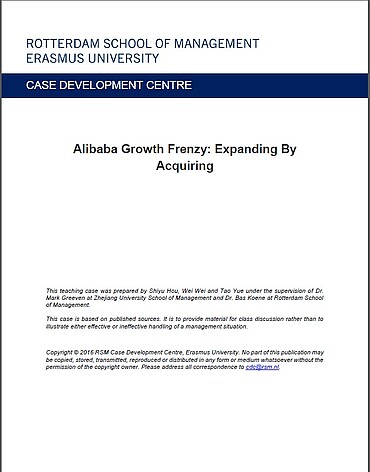description
The Chinese Internet giant Alibaba has moved from organic growth to growing through massive M&As in technology and non-technology sectors. Is this seemingly 'reckless' expansion really a lack of focus? What are the key challenges for such high-speed growth?
Objective
After discussing this case, students should be able to: 1. Describe the transformation of Alibaba Group's growth strategy. 2. Evaluate the pros and cons of using M&As to achieve high growth. 3. Compare and contrast Alibaba's growth strategy with that of its competitors. 4. Interpret the impact of the business environment on Alibaba's growth strategy.
Citation Note
Based on field research; 18 pages.
Follow the 'handle' link to access the Case Study on RePub.
For EUR staff members: the Teaching Note is available on request, you can contact us at rsm.nl/cdc/contact/
For external users: follow the link to purchase the Case Study and the Teaching Note.
Abstract
While Alibaba's growth from an apartment-sized company in 1999 to a company with the largest IPO value in American history in 2014 can only be high-velocity, founder Jack Ma's taste for speed is relentless. Since early 2012 Alibaba Group has shifted gears and moved from organic growth and partnerships to high-speed growth by M&As in complementary technology fields. It has been expanding in finance, healthcare, travel and even movie making. Is it necessary for Alibaba to expand so aggressively? Is this seemingly “reckless" expansion really a lack of focus? What growth strategies work well for companies in emerging economies? How to compare the relative advantages of the different growth models – organic, collaboration and M&A? How does the business environment influence possible growth strategies – growing by diversification or focus on the core business? What are the key challenges for such high-speed growth? How do M&As lead to value creation for Alibaba?
